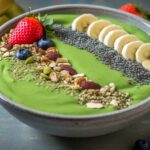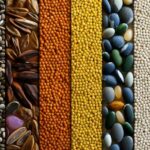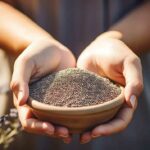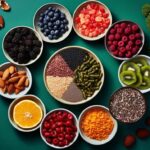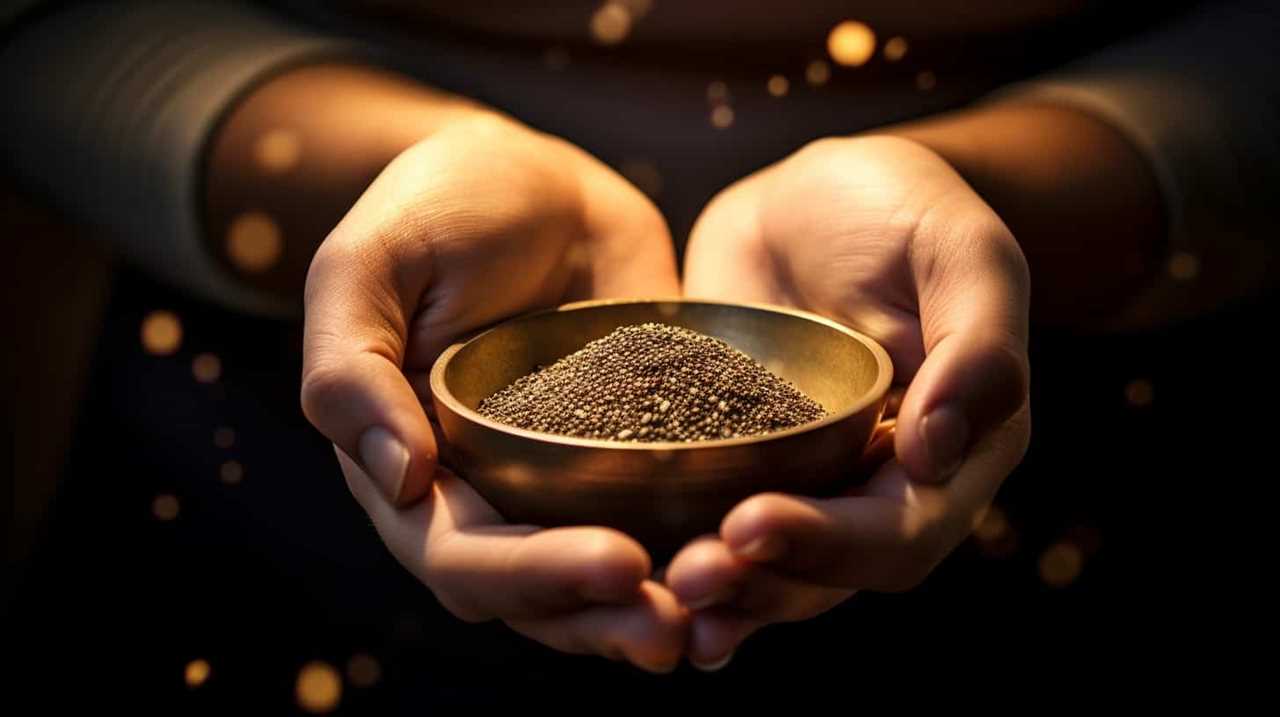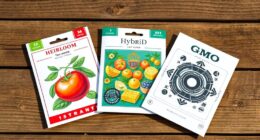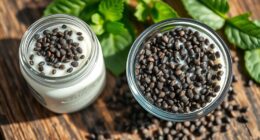Are you prepared to immerse yourself in the realm of successful commercial seed farming? Look no further! We offer you the ultimate guide created to help you become skilled in the practice of seed cultivation.
From selecting the right chia seed varieties to implementing effective sowing techniques, we’ll equip you with the knowledge and skills you need.
Get ready to witness your seed farm flourish as we unveil the secrets to a bountiful harvest.
Let’s dive in and unlock the potential of your seed farming venture.
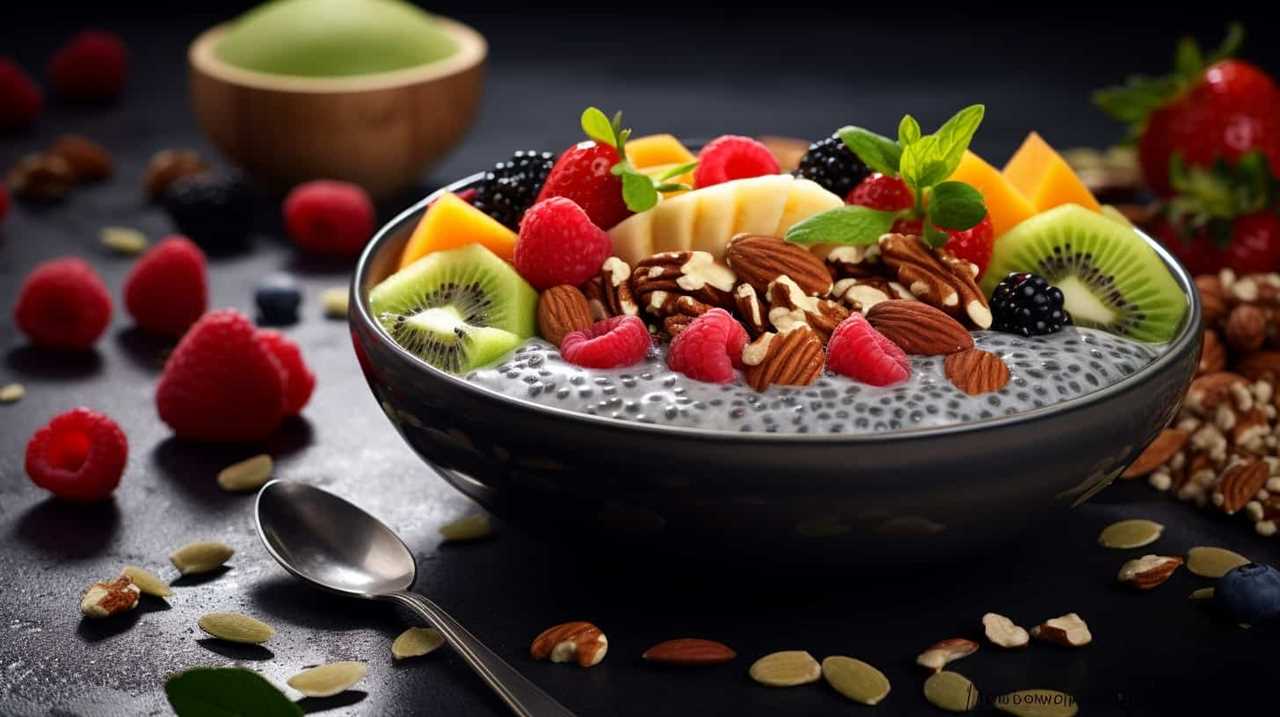
Key Takeaways
- Evaluate market demand and research consumer preferences to select the right chia seed varieties for commercial seed farming.
- Assess soil conditions and optimize growing conditions to ensure healthy seedling growth and maximize crop yield.
- Implement effective seed sowing techniques, including selecting high-quality seeds and ensuring proper soil moisture and temperature for germination.
- Manage pest and disease control using integrated pest management techniques and organic pest control methods to minimize the impact on crop quality.
Selecting the Right Chia Seed Varieties
First, we need to narrow down our options by selecting the top three chia seed varieties for our commercial seed farming operation.
To make this decision, it’s crucial to evaluate market demand and determine the optimal planting density.
By assessing market demand, we can identify which chia seed varieties are in high demand and have the potential for profitability. This involves researching consumer preferences, market trends, and potential buyers.
Additionally, determining the optimal planting density is essential for maximizing yield and ensuring efficient land use. Factors such as soil conditions, climate, and available resources should be considered to achieve the ideal planting density for each chia seed variety.
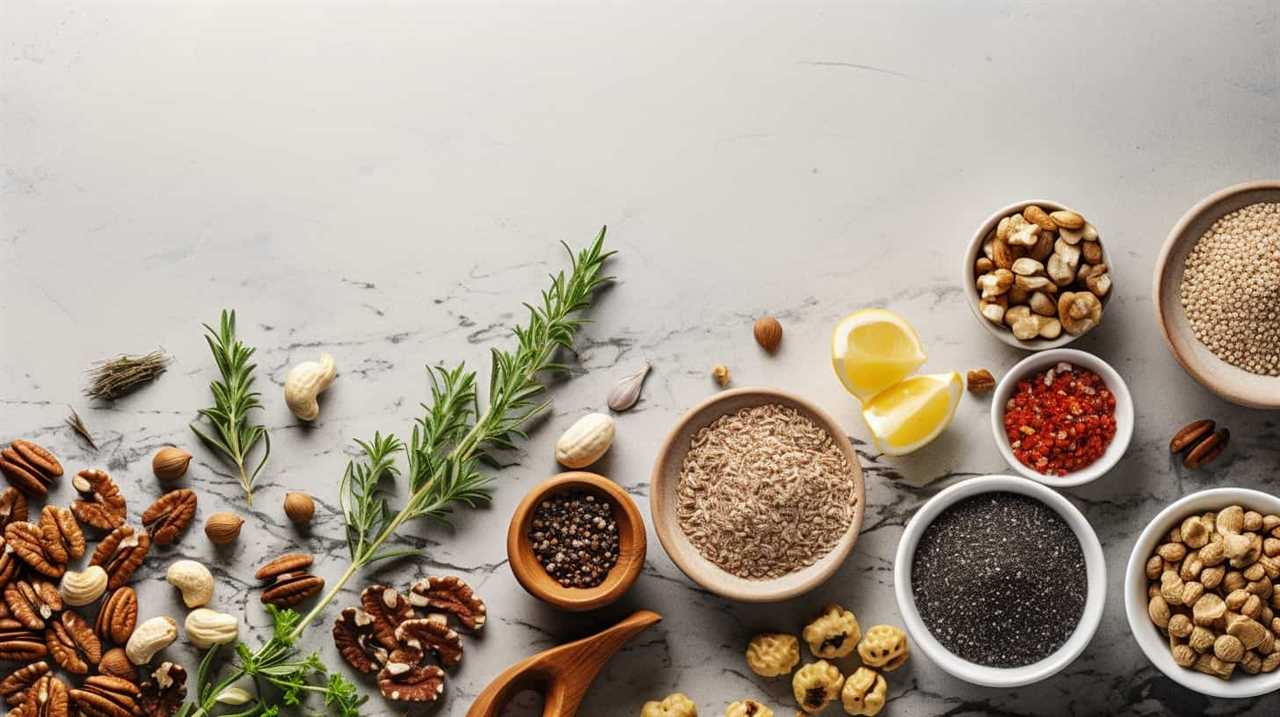
Establishing the Ideal Growing Conditions
To establish the ideal growing conditions for our commercial seed farming operation, we’ll assess the soil conditions, climate, and available resources for each selected chia seed variety. Our goal is to optimize soil fertility and maximize water efficiency to ensure the highest quality and yield of seeds. Here are three key factors we’ll consider:
- Soil Analysis: We’ll conduct thorough soil tests to determine its pH levels, nutrient content, and organic matter. This analysis will guide us in making necessary amendments to optimize soil fertility for chia seed cultivation.
- Climate Evaluation: Understanding the climatic conditions is crucial for successful seed farming. We’ll assess temperature, rainfall patterns, and sunlight exposure to determine the ideal conditions for each chia seed variety.
- Resource Management: Efficient water usage is paramount in seed farming. We’ll implement irrigation systems that minimize water wastage while ensuring that the plants receive adequate moisture.
By carefully evaluating these factors, we can create the ideal growing conditions for our commercial seed farming operation, setting the stage for successful chia seed production.
In the next section, we’ll discuss implementing effective seed sowing techniques to further optimize our farming process.
Implementing Effective Seed Sowing Techniques
Now let’s explore how we can effectively sow seeds to optimize our commercial seed farming operation.
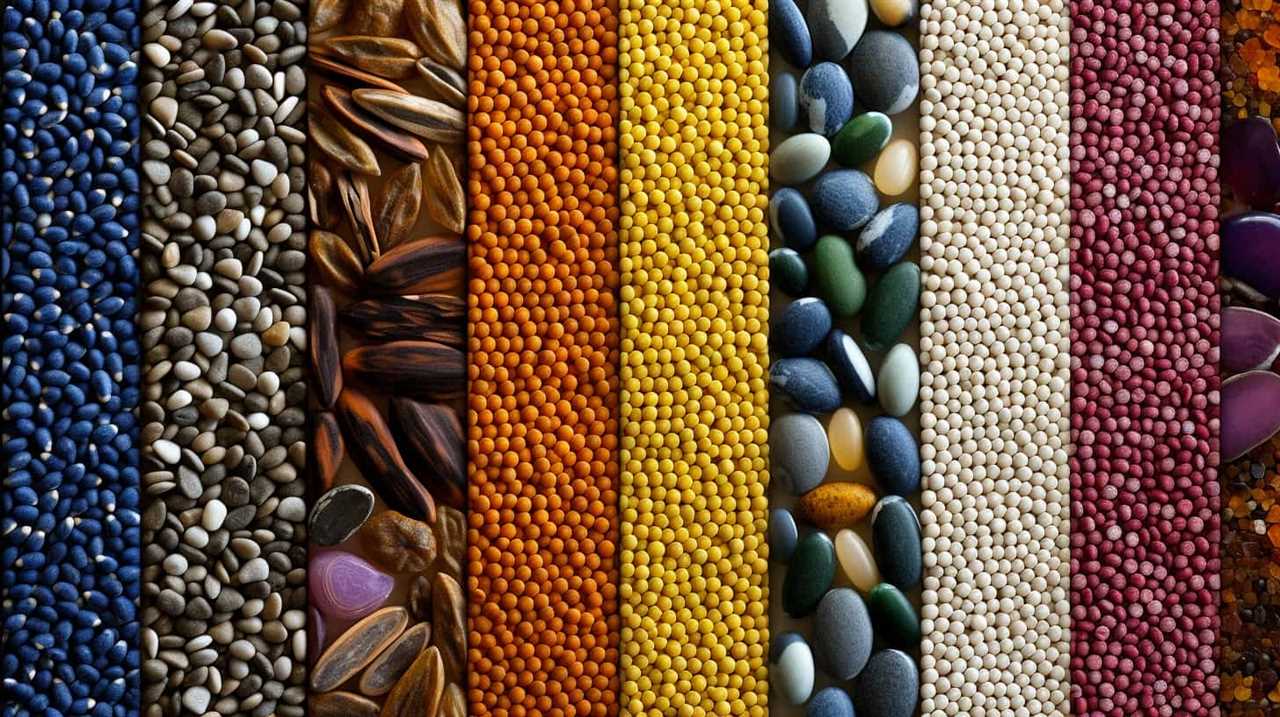
Seed germination optimization is crucial for a successful seed farming venture. To achieve this, it’s important to select high-quality seeds and provide them with optimal conditions.
Start by preparing a well-drained seedbed with sufficient organic matter. Ensure proper soil moisture and temperature to facilitate seed germination. The depth of sowing should be appropriate for each seed type. Additionally, consider using seed priming techniques to enhance germination rates.
Once the seeds have germinated and developed into seedlings, careful seedling transplantation methods must be employed. This involves handling the delicate seedlings with care and providing them with suitable growing conditions to ensure their healthy establishment.
Managing Pest and Disease Control
We implement effective pest and disease control strategies to ensure the success of our commercial seed farming operation. Our approach is based on integrated pest management, which involves using a combination of techniques to control pests and diseases.
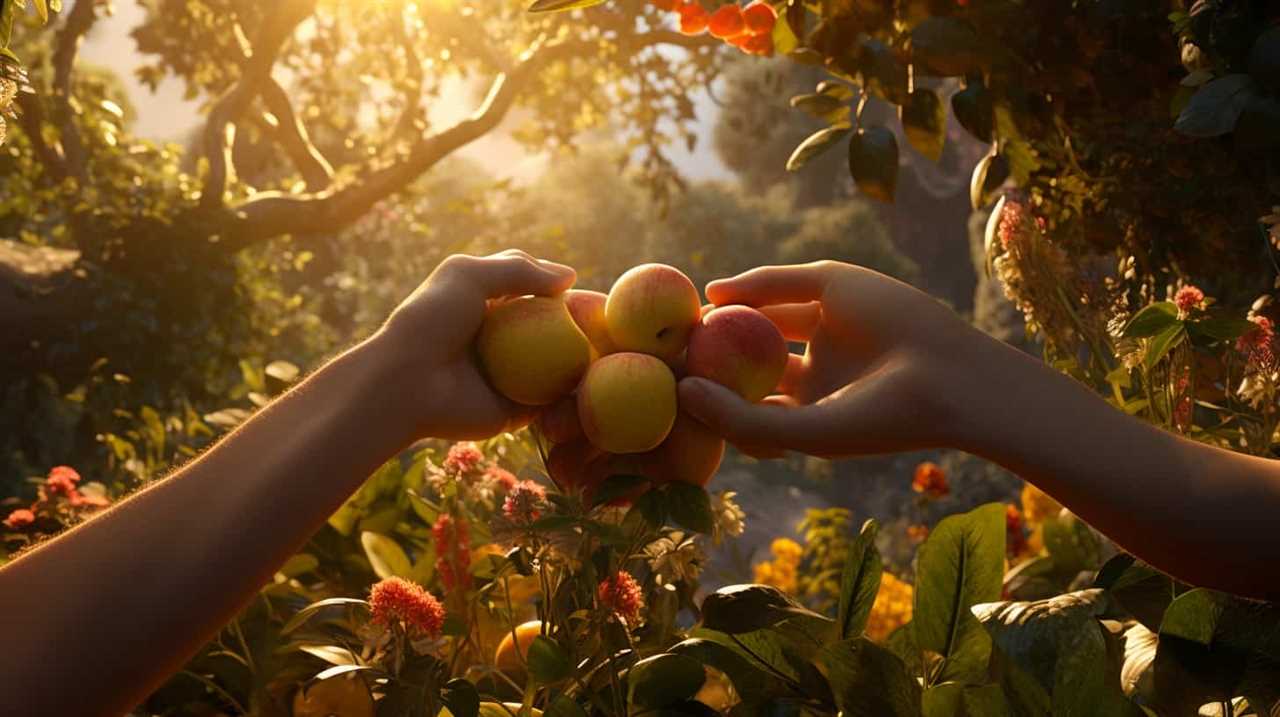
Here are three sub-lists explaining our methods:
- Biological control: We introduce natural predators and parasites that prey on pests, reducing their populations.
- Cultural control: We implement practices such as crop rotation and sanitation to prevent the buildup of pests and diseases.
- Organic pest control methods: We use natural and non-toxic substances like neem oil and insecticidal soaps to control pests without harming the environment or compromising the quality of our seeds.
By implementing these strategies, we’re able to minimize the impact of pests and diseases on our crops and ensure the production of high-quality seeds.
Now, let’s move on to the next section which covers harvesting and processing chia seeds.
Harvesting and Processing Chia Seeds
Once the chia plants have reached maturity, our team begins the process of harvesting and processing the seeds. Harvesting chia seeds is a crucial step in maximizing yield and quality. We carefully monitor the plants, ensuring that the seeds are fully matured before harvesting to obtain optimal chia seed benefits.
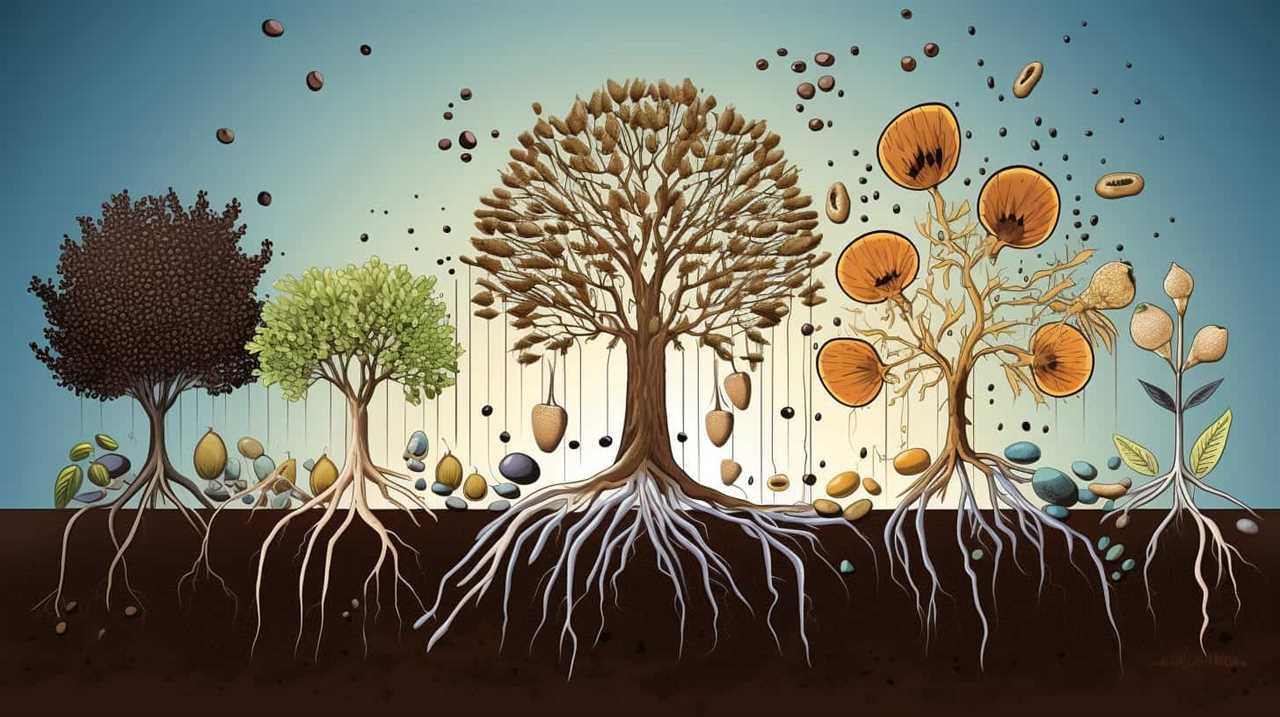
Chia seeds are typically harvested by cutting the seed heads and collecting them in bins. After harvesting, the seeds undergo a thorough cleaning process to remove any impurities. This is followed by drying the seeds to reduce moisture content. Once dried, the seeds are ready for processing, which involves removing the outer shell to obtain the edible seed.
The processed chia seeds are then packaged and stored, ready for the chia seed market trends. Our meticulous harvesting and processing techniques guarantee the highest quality chia seeds for our customers.
Conclusion
In conclusion, commercial seed farming is a complex but rewarding endeavor. By carefully selecting the right chia seed varieties, establishing ideal growing conditions, implementing effective sowing techniques, and managing pest and disease control, farmers can ensure a successful harvest.
Furthermore, the meticulous process of harvesting and processing chia seeds is key to maintaining their quality. So, grab your overalls and get ready to embark on a journey of seed farming that will make your garden the envy of all the other plants.
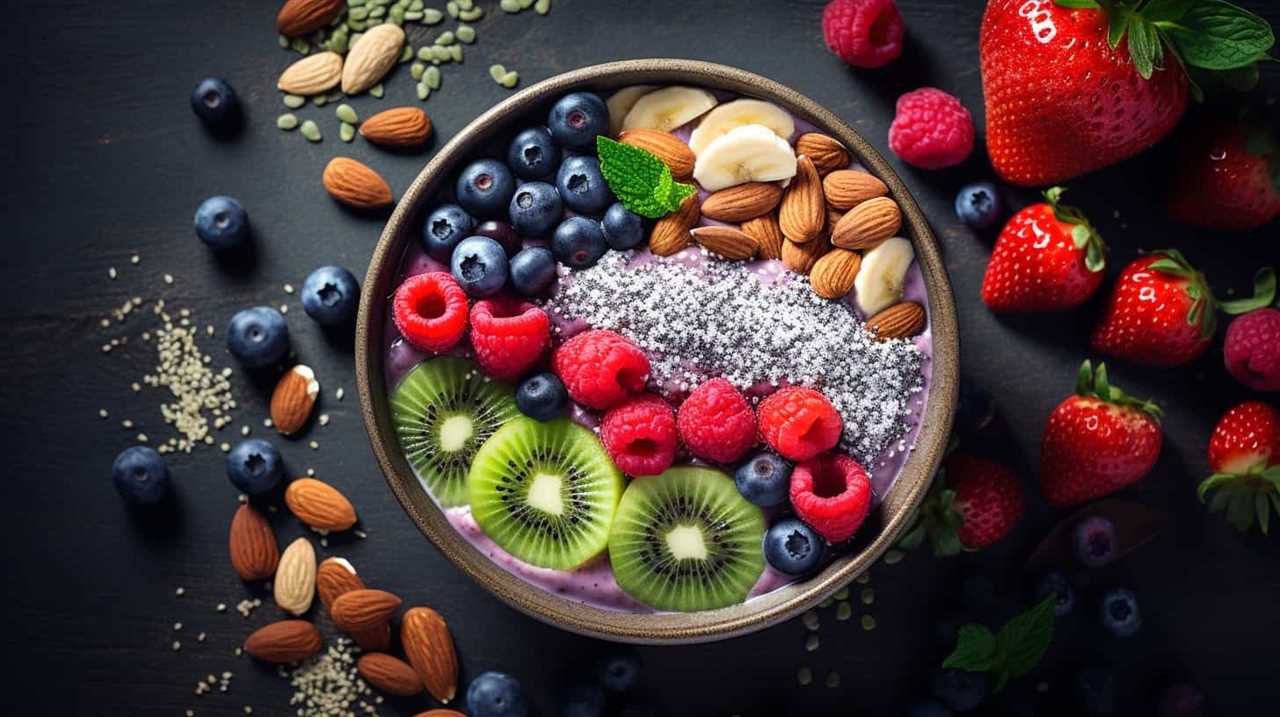
Happy farming!


